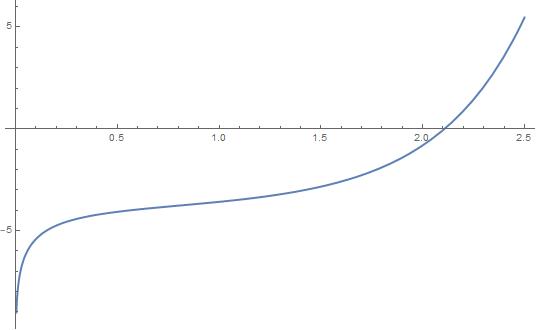We can solveSymbolic functions like Reduce and Solve provide an exactlyexact solution of the given equation in terms of the Root objects.
xs = x /. First @ Solve[ x^x^x == 36 && x > 0, x]
Root[{-36 + #1^#1^#1 & , 2.10703646395674928520879246974369419433`20.601147030102787}]
This solution is not an algebraic number and cannot be represented as a root of polynomial with rational coefficients. Nonetheless solutions of transcendental equations represented with Root objects are exact as well even though they cannot be represented in terms of radicals. For more detailed discussion of Root objects see e.g. How do I work with Root objects?
Our solution xs can be numerically approximated with arbitrary precision, e.g.
N[ xs, 50]
2.1070364639567492852140489758794729541219024075415
We can also find an algebraic approximationalgebraic approximation of the solution xs with RootApproximant, e.g. in terms of a root of third order polynomial:
RootApproximant[xs, 3] // InputForm
Root[-9946 + 4127*#1 - 262*#1^2 + 258*#1^3 & , 1, 0]
ToRadicals @ %
1/387 (131 + (3850120229 + 15093 Sqrt[98585357943])^(1/3)/2^(2/3) - 1562827/(2 (3850120229 + 15093 Sqrt[98585357943]))^(1/3))
qiutethis is quite a good approximation
N[{xs, RootApproximant[xs, 3]}, 17]
{2.1070364639567493, 2.1070364639567491}
Let's represent the solution graphically:
Plot[ -Log[36] + Log[x] x^x, {x, 0, 2.5}, PlotStyle -> Thick]
Warning
Equation x^x^x == 36 can be rewritten equivalently as Exp[x Log[x]] Log[x] - Log[36] == 0. Solving it with Reduce or Solve yields another Root object which should beis the same solution even though Mathematica might have difficulties with automatic demonstratingdoes not demonstrate automatically that they are mathematically equal.

